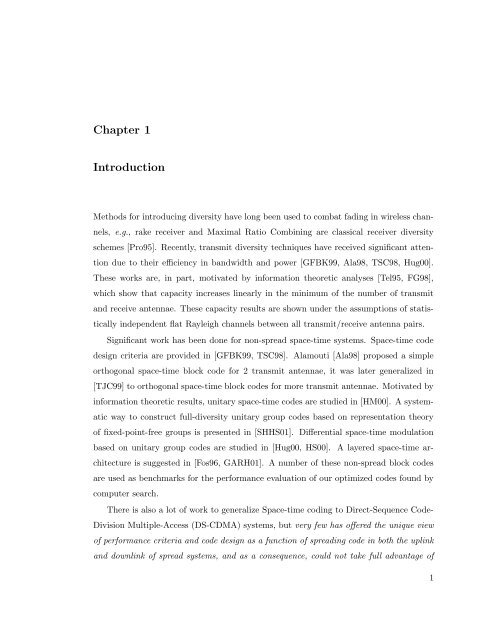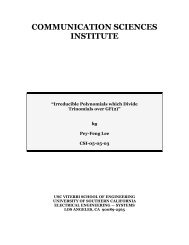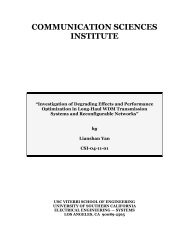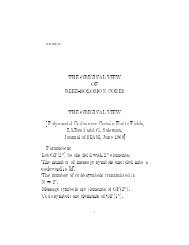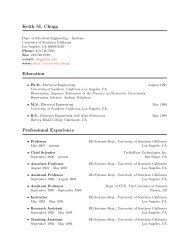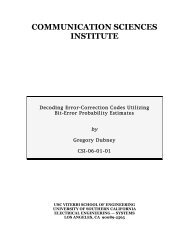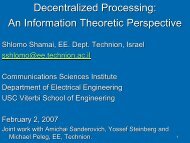Space-Time Block Codes for Wireless Systems - The ...
Space-Time Block Codes for Wireless Systems - The ...
Space-Time Block Codes for Wireless Systems - The ...
Create successful ePaper yourself
Turn your PDF publications into a flip-book with our unique Google optimized e-Paper software.
Chapter 1<br />
Introduction<br />
Methods <strong>for</strong> introducing diversity have long been used to combat fading in wireless channels,<br />
e.g., rake receiver and Maximal Ratio Combining are classical receiver diversity<br />
schemes [Pro95]. Recently, transmit diversity techniques have received significant attention<br />
due to their efficiency in bandwidth and power [GFBK99, Ala98, TSC98, Hug00].<br />
<strong>The</strong>se works are, in part, motivated by in<strong>for</strong>mation theoretic analyses [Tel95, FG98],<br />
which show that capacity increases linearly in the minimum of the number of transmit<br />
and receive antennae. <strong>The</strong>se capacity results are shown under the assumptions of statistically<br />
independent flat Rayleigh channels between all transmit/receive antenna pairs.<br />
Significant work has been done <strong>for</strong> non-spread space-time systems. <strong>Space</strong>-time code<br />
design criteria are provided in [GFBK99, TSC98]. Alamouti [Ala98] proposed a simple<br />
orthogonal space-time block code <strong>for</strong> 2 transmit antennae, it was later generalized in<br />
[TJC99] to orthogonal space-time block codes <strong>for</strong> more transmit antennae. Motivated by<br />
in<strong>for</strong>mation theoretic results, unitary space-time codes are studied in [HM00]. A systematic<br />
way to construct full-diversity unitary group codes based on representation theory<br />
of fixed-point-free groups is presented in [SHHS01]. Differential space-time modulation<br />
based on unitary group codes are studied in [Hug00, HS00]. A layered space-time architecture<br />
is suggested in [Fos96, GARH01]. A number of these non-spread block codes<br />
are used as benchmarks <strong>for</strong> the per<strong>for</strong>mance evaluation of our optimized codes found by<br />
computer search.<br />
<strong>The</strong>re is also a lot of work to generalize <strong>Space</strong>-time coding to Direct-Sequence Code-<br />
Division Multiple-Access (DS-CDMA) systems, but very few has offered the unique view<br />
of per<strong>for</strong>mance criteria and code design as a function of spreading code in both the uplink<br />
and downlink of spread systems, and as a consequence, could not take full advantage of<br />
1


